Few actors could be better suited than David Tomlinson for the role of a doltish viscount unintentionally entangled in politics, and this brisk 1949 satire was a huge success both for the accomplished character player and his similarly gifted co-stars, Cecil Parker and eighty-year-old film veteran A.E. Matthews. The Chiltern Hundreds is directed by John Paddy Carstairs – whose in his later career he went on to direct a string of box-office hits with the likes of Frankie Howerd, Norman Wisdom and Tommy Steele
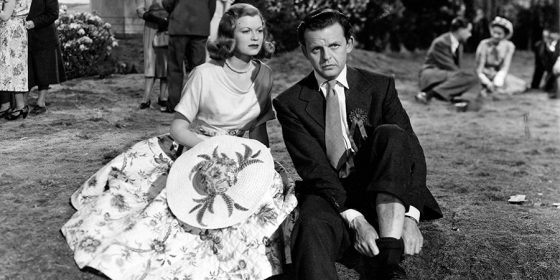
Young Viscount Tony Pym wangles National Service leave on the pretext of standing as a Tory candidate for a local seat held by his family for generations. The request is a feeble excuse to enable Pym to marry his wealthy American fiancee while she’s still in England, but his masterplan backfires when he finds himself swept into an election campaign and beaten by Labour’s Mr Cleghorn – who is then made a peer. In an attempt to save face, Pym decides to stand again – as a socialist. It all proves too much for the Pyms’ loyal, true-blue butler, Mr Beecham…
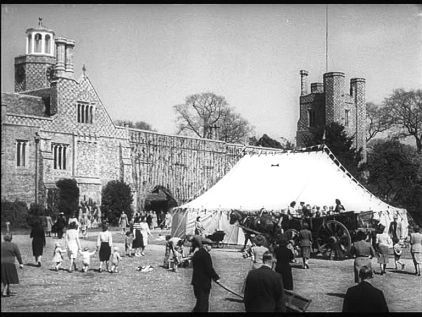
David Tomlinson
But despite his image as a happy-go-lucky gentleman, David Tomlinson’s personal story was plagued by misfortune – including a tragic murder-suicide. Born in May 1917 and raised in the middle-class surroundings of Folkestone, Tomlinson – known as DT to friends – left school at 15 and took a job in accounting, before trying his luck as an actor.
“It was a profession that required no qualification of any kind,” he reminisced. “It is a very attractive way of spending one’s life.” Although his parents detested his fickle choice of career, David adored the life of a wandering actor, often lodging in shabby theatrical boarding houses piped with lukewarm water and lumpy beds.
His favourite story was of an old landlady telling him of the kindness of her previous guest. “Do you know,” she explained, “that man went out on Saturday night, met a sailor who had nowhere to stay and let him share his bed.”
When the Second World War interrupted his career, he was posted to Canada as an RAF flight lieutenant and flying instructor. In 1943 in New York, he married socialite and heiress Mary Lindsay Hiddingh, whose husband had been killed in action, and became stepfather to her sons Michael, eight, and John, six. “She was the most beautiful woman I had ever seen,” he declared. “We were terribly in love.”
Mary, who had raven hair and almond eyes, worked at the British Ministry of War Transportation office on Broadway. “I was the luckiest fellow in the world,” Tomlinson gushed, as they excitedly mapped out a future life together.
However, even before the honeymoon glow had faded, he was recalled to Britain – leaving his new wife and the children in New York. Eventually, Mary was given permission to join her husband but was stunned when she learned the children would have to remain in America and wait out the war.
The following day – with the children in tow – she checked into the Henry Hudson Hotel on West 57th Street. The family took the lift to their 15th floor room. The next morning Mary ended her life and those of the children – in a manner everyone struggled to explain. Police records detail how she rose from bed, unlatched the window and plunged to her death, holding John to her body and Michael by the hand. All three were killed instantly after striking the roof of a business near 9th Avenue.
David Tomlinson was never able to bring himself to visit Mary’s grave. As this was all going on, back in Europe, his bomber pilot brother Peter was marched into a Nazi prison camp after crashing during a mission.
“It was a fearful blow,” Tomlinson remembered. Peter survived the war but was thin as a rake after suffering severe malnutrition. He spoke of how, after dragging himself on foot through a treacherous landscape on a forced march to Flensburg, advancing Allied troops set him free in 1945. Remarkably, after his own demobilisation, Tomlinson broke into films in 1946.
“There is nobody more interested in the successful development of my career than me,” he reasoned on refusing to engage an agent. His son Henry recalled how this decision manifested itself in an idiosyncratic way. “We would hear the phone ring and I would stand at the sitting room door listening, thinking, ‘Why is dad talking with an American accent?’ And then it became clear he had this imaginary manager-agent called Harry Gunnell.”
DT was known to friends as one of the best-natured of men but, as the actor Robert Morley observed, was “never one to cheerfully take orders from officialdom”.
“Dad had no safety mechanism,” his son Jamie explained. “He said exactly what he thought. He was also utterly fearless.” It was a trait which led to countless misunderstandings. As one former colleague put it: “He was a straight-talker. For some people, especially the more sensitive types, that could be shocking.”
As his star shone in the late 40s with appearances in Miranda, Broken Journey, and School for Secrets, the latter alongside Ralph Richardson, he was rarely without a girl but none of the short-lived relationships, including with film actresses Dinah Sheridan and Jill Clifford, provided what he sought.
Happiness finally came with his marriage to actress Audrey Freeman in 1953. Blessed with long legs and a stunning complexion, Barnsley-born Freeman had been starring in the West End alongside George Formby.
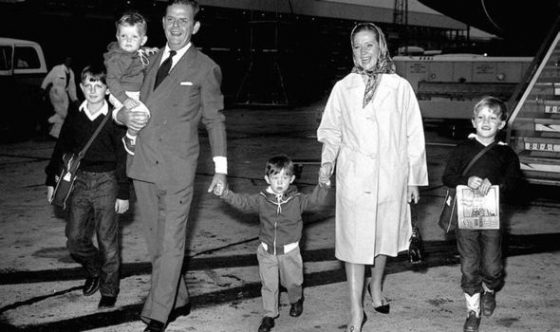
“I was truly smitten with David,” she recalled with a hoot. “He had immense sex appeal. He didn’t know it and laughed when women were suggestive. I think comedians do have it, you know – people that make you laugh are very attractive.” The couple married in 1953 and had four sons, David Jr, William, Henry and James. They remained together for 47 years until his death.
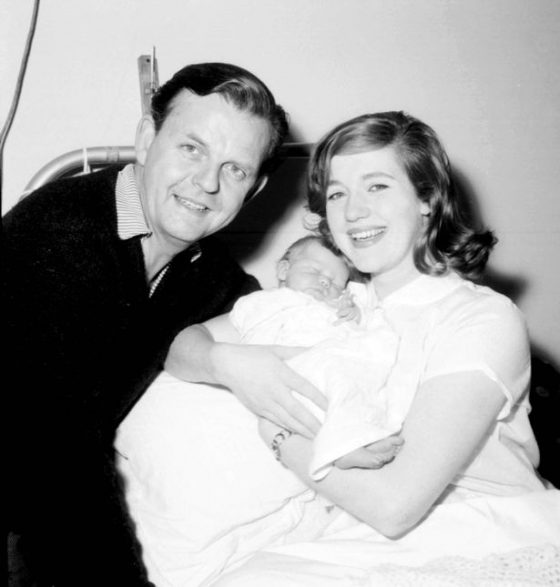
Though he often played serious roles, comedy was his forte. With his perplexed expression and aristocratic voice, he shone in classics like Up the Creek, Hotel Sahara and Three Men in a Boat.
“David didn’t actually need funny dialogue,” Vera Day, who starred with him in Up the Creek, told me. “You just needed to look at his face… it could explode into exasperation in a millisecond. He could steal a scene without breaking a sweat.”
He breezed through a string of West End successes before Mary Poppins catapulted him to international stardom. “I couldn’t believe it. I clutched the script to my bosom and hurried home to Audrey,” he cried on winning the role. By then, well into his forties and by no means a matinee idol, his face had developed more folds and creases, leading Noel Coward to quip that he “resembled a very old baby”.
Julie Andrews starred as the no-nonsense nanny taking charge of two unruly children, and turning their father, Mr Banks, from a stuffed shirt into quite the lad. Her mission accomplished, Poppins disappears on the next wind. “He knew he was good but was never unpleasant with it,” Julie Andrews recalled. “He always nailed every ‘take’ so well.”
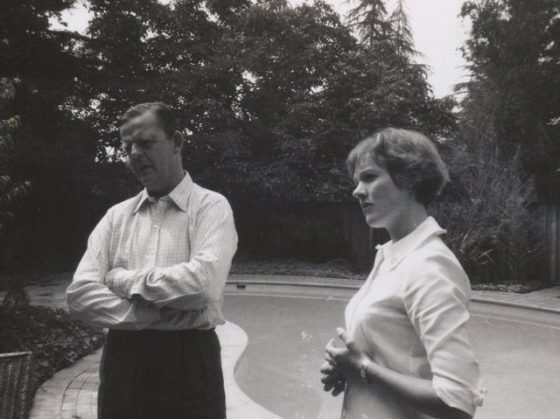
The film included Tomlinson’s triumphant performance of Let’s Go Fly A Kite with his on-screen children, Karen Dotrice and Matthew Garber as Jane and Michael Banks, and Dick Van Dyke as Cockney jack-of-all-trades, Bert. However, when the first preview took place at a small theatre near Walt Disney’s office, DT was aghast. “I thought it was the worst film I had ever seen, the most sentimental rubbish,” he lamented. “And I practically said to dear darling Walt, ‘Well, you can’t win them all, can you?’”
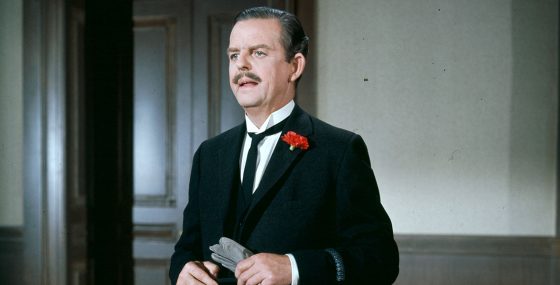
As it happened, Mary Poppins was not only greeted with almost universal critical acclaim, it won five Academy Awards, two Baftas, a Grammy and a Golden Globe. “I was wrong about that one,” he admitted.
It later transpired the inspiration for Tomlinson’s portrayal of Mr Banks came from his own life. He discovered in middle age that his father – a stiff and proper Edwardian lawyer – had been living a double life with a secret second family, including seven children.
It wasn’t long afterwards that Tomlinson and Audrey were devastated when William, their third son, began displaying unusual behaviour. Doctors believed he was hearing impaired but the couple weren’t convinced. After consulting anyone that would listen, it was found Willie was suffering from autism, then a virtually unknown condition. “Doing the right thing by Will became my parents’ greatest achievement,” David Jr reflected.
Although David Tomlinson was bombarded with social invites, he avoided showbiz circles and revelled in family life at his country cottage in Buckinghamshire.

The success of Poppins was rewarded with a steady income and parts in two further Disney blockbusters; as villain Peter Thorndyke in The Love Bug and quack magician Emelius Browne in Bedknobs and Broomsticks, a sobering experience. During a tense shoot in California, he failed to hit it off with co-star Angela Lansbury who constantly upstaged him. Audrey recalled. “ Angela Lansbury was terrified of him and made it very tough. He found it very awkward.”
Despite being a hit, the experience was sour and DT omitted the movie altogether from his memoirs. While nothing ever replicated the magnitude of Mary Poppins, he worked throughout the 1970s and 80s, appearing on radio, TV and tirelessly promoting autism charities. But his greatest pleasure was motoring around England in his vintage Bentley sniffing out antiques shop bargains.
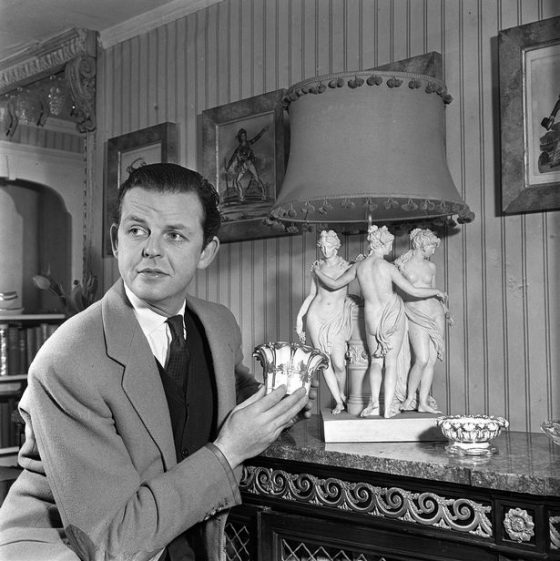
“He was an avid collector and that kept him busy,” says Audrey. “He got wonderful things at marvellous prices before those antiques programmes started on TV.”
However, even retirement was tinged with tragedy. In never-before-seen letters, Tomlinson wrote of his devastation at his brother Peter’s suicide in 1997.
The end came on the morning of June 24, 2000, when, aged 83, DT slipped away without any fuss. His final wish – made tongue firmly in cheek – was to have the tribute: “David Tomlinson, an actor of genius, irresistible to women,” on his headstone. “Obviously, our mum had her own thoughts about that and it didn’t quite happen,” says his son Henry.
Despite a life of ups and downs, David Tomlinson always maintained he was luckier than most. I think he probably was.
Place your comment